How Pottery Can Make Your Food Taste Better
Have you ever wondered why some meals just taste better when served in a beautiful dish? It's not just your imagination! The use of pottery in culinary experiences is a game-changer, influencing not only the aesthetic appeal of your food but also its flavor. Pottery has a rich history that dates back thousands of years, serving as a vessel for cooking, storing, and presenting food. This article will delve into the unique ways pottery enhances the flavor and presentation of food, its historical significance, and practical tips for incorporating pottery into your culinary experiences.
Pottery has been an integral part of human civilization, with its origins tracing back to ancient cultures. From the clay pots of the Neolithic era to the exquisite ceramic dishes of the Ming Dynasty, pottery has shaped how we consume and appreciate food. Understanding its cultural heritage can deepen your appreciation for how it influences flavor and enhances dining experiences. Imagine sitting around a fire, sharing stories while enjoying a meal served in handcrafted pottery. This connection to our ancestors reminds us of the communal aspect of dining, making every meal feel special.
When it comes to pottery, not all materials are created equal. Different types of pottery, such as earthenware, stoneware, and porcelain, each offer unique properties that can affect your culinary experience. For instance, earthenware is known for its porous nature, which allows for moisture retention, while stoneware is celebrated for its durability and heat retention. Understanding these materials can help you choose the right pottery for cooking and serving, ultimately enhancing the flavors of your dishes.
Earthenware is a fantastic choice for those looking to elevate their cooking game. Its porous nature allows it to absorb moisture, which can enhance the flavors of the dishes prepared or served in it. When you cook in earthenware, the slow and even heat distribution allows ingredients to meld together beautifully, creating a symphony of flavors. This is particularly beneficial for stews and casseroles, where the depth of flavor is essential.
Utilizing earthenware for slow cooking can transform your meals. Think of it as a cozy blanket for your ingredients, allowing them to simmer and develop their flavors over time. Here are some traditional cooking techniques that maximize flavor:
- Slow Braising: Perfect for meats and vegetables, this technique allows flavors to deepen as they cook slowly.
- Roasting: Roasting in earthenware can create a beautiful crust while keeping the inside moist and flavorful.
- Stewing: The moisture retention of earthenware makes it ideal for stews, ensuring that every bite is packed with flavor.
Serving food in earthenware not only enhances the taste but also creates a rustic presentation that can make any meal feel special. Imagine a vibrant vegetable stew served in a handmade bowl, with the earthy tones of the pottery complementing the colors of the dish. This aesthetic not only pleases the eye but also engages the senses, making the dining experience more enjoyable.
Stoneware is another excellent option for culinary enthusiasts. Known for its strength and heat retention, stoneware can intensify flavors through even cooking. When you use stoneware, you're not just investing in a durable piece of cookware; you're enhancing your food's taste. The ability of stoneware to maintain consistent temperatures means that your dishes will cook evenly, preventing hot spots that can lead to burnt or undercooked areas.
Beyond functionality, pottery adds a layer of beauty to dining. The visual appeal of pottery can significantly enhance the overall enjoyment of meals. Think about how a beautifully crafted dish can elevate a simple salad or make a hearty stew look gourmet. The colors, textures, and designs of pottery can evoke emotions and set the mood for your dining experience.
The colors and designs of pottery can influence mood and appetite. Bright, vibrant colors can stimulate the senses, while earthy tones can create a calming atmosphere. When selecting pottery for your kitchen, consider how the aesthetic choices can impact the dining experience. A well-designed piece can be the difference between a meal that feels ordinary and one that feels extraordinary.
Building a collection of pottery can enhance your culinary adventures. Whether you're a seasoned chef or a home cook, having a variety of pottery pieces at your disposal allows you to experiment with different cooking and serving styles. When selecting pieces, consider how they complement your cooking style and enhance flavors. Look for unique designs that resonate with you and reflect your personality.
Q: Can I use pottery in the oven?
A: Yes, many types of pottery, especially stoneware, are designed for oven use. Just be sure to check the manufacturer's guidelines.
Q: How do I care for my pottery?
A: Hand washing is usually recommended to preserve the integrity of your pottery. Avoid sudden temperature changes to prevent cracking.
Q: Does pottery really enhance the flavor of food?
A: Absolutely! The unique properties of different types of pottery can affect heat retention and moisture, both of which play a crucial role in flavor development.
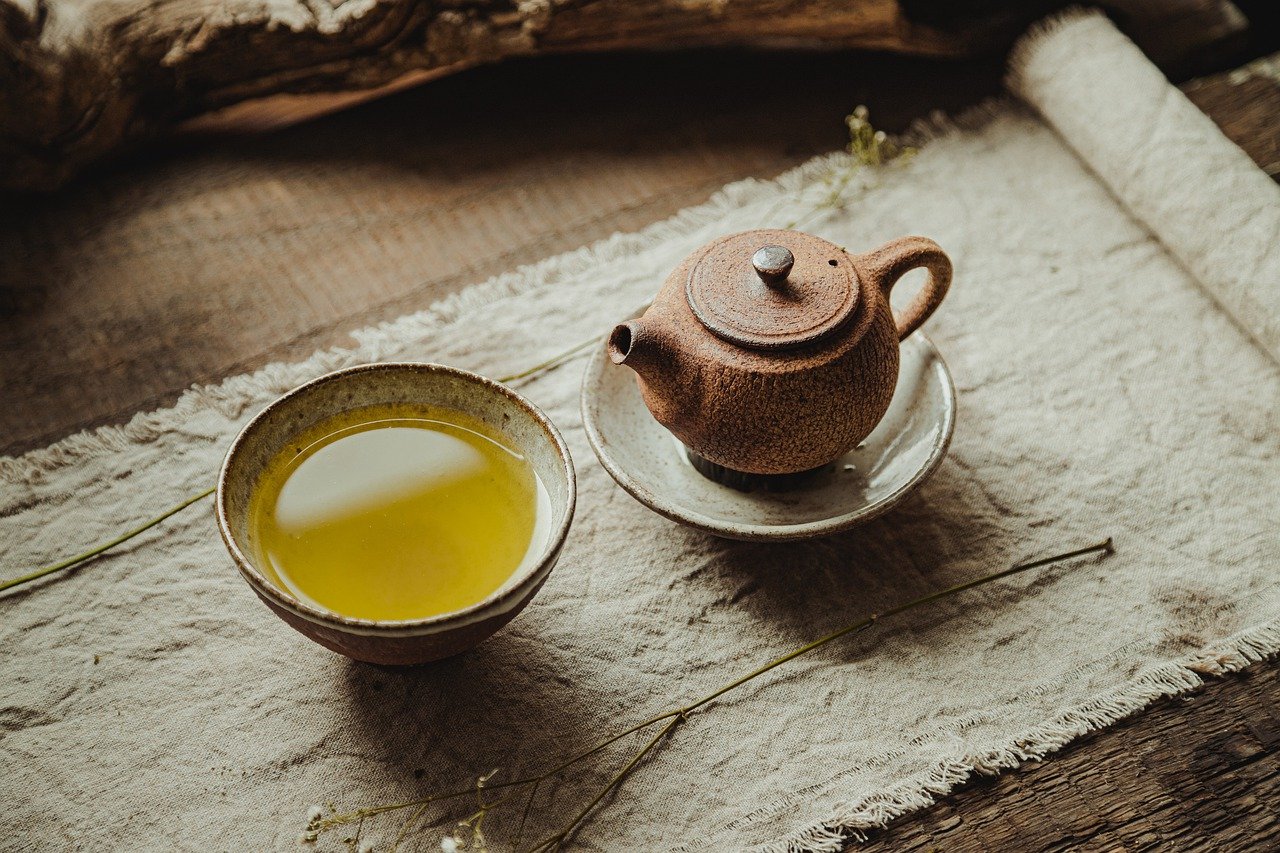
The Historical Significance of Pottery
Pottery is not just a medium for crafting beautiful dishes; it is a vessel of history that tells the story of human civilization. For thousands of years, different cultures have utilized pottery for storing and serving food, and this practice has shaped culinary traditions around the globe. From the ancient Greeks who used amphorae to transport olive oil to the Chinese who perfected porcelain, pottery's role has been significant in enhancing both the flavor and presentation of food.
As you delve deeper into the world of pottery, you might find yourself amazed at how this art form has influenced not only the way we cook but also the way we eat. Imagine gathering around a table adorned with handcrafted pottery, each piece echoing stories of the past. This connection to history enhances our dining experiences, making each meal feel like a celebration of culture and tradition.
Moreover, the cultural heritage of pottery varies from region to region, with each style reflecting the unique characteristics and resources of its environment. In many indigenous cultures, pottery is not merely functional; it holds spiritual significance and is often used in rituals. This deep-rooted connection to the land and community adds layers of meaning to the food served in these vessels, enriching the flavors with stories and traditions.
Understanding the historical significance of pottery can transform your perspective on dining. When you enjoy a meal served in a beautifully crafted bowl, you're not just tasting the food; you're experiencing a slice of history that has been passed down through generations. So, the next time you sit down to eat, take a moment to appreciate the pottery that holds your meal. It’s more than just a dish; it’s a connection to our ancestors and a celebration of culinary art.
- Why is pottery important in culinary traditions? Pottery has been used for centuries to store and serve food, enriching the flavor and presentation while connecting us to our cultural heritage.
- What types of pottery are best for cooking? Earthenware, stoneware, and porcelain each have unique properties that can enhance cooking and serving experiences.
- How does pottery affect the flavor of food? The materials and techniques used in pottery can influence heat retention and moisture, which in turn can enhance the flavors of dishes.
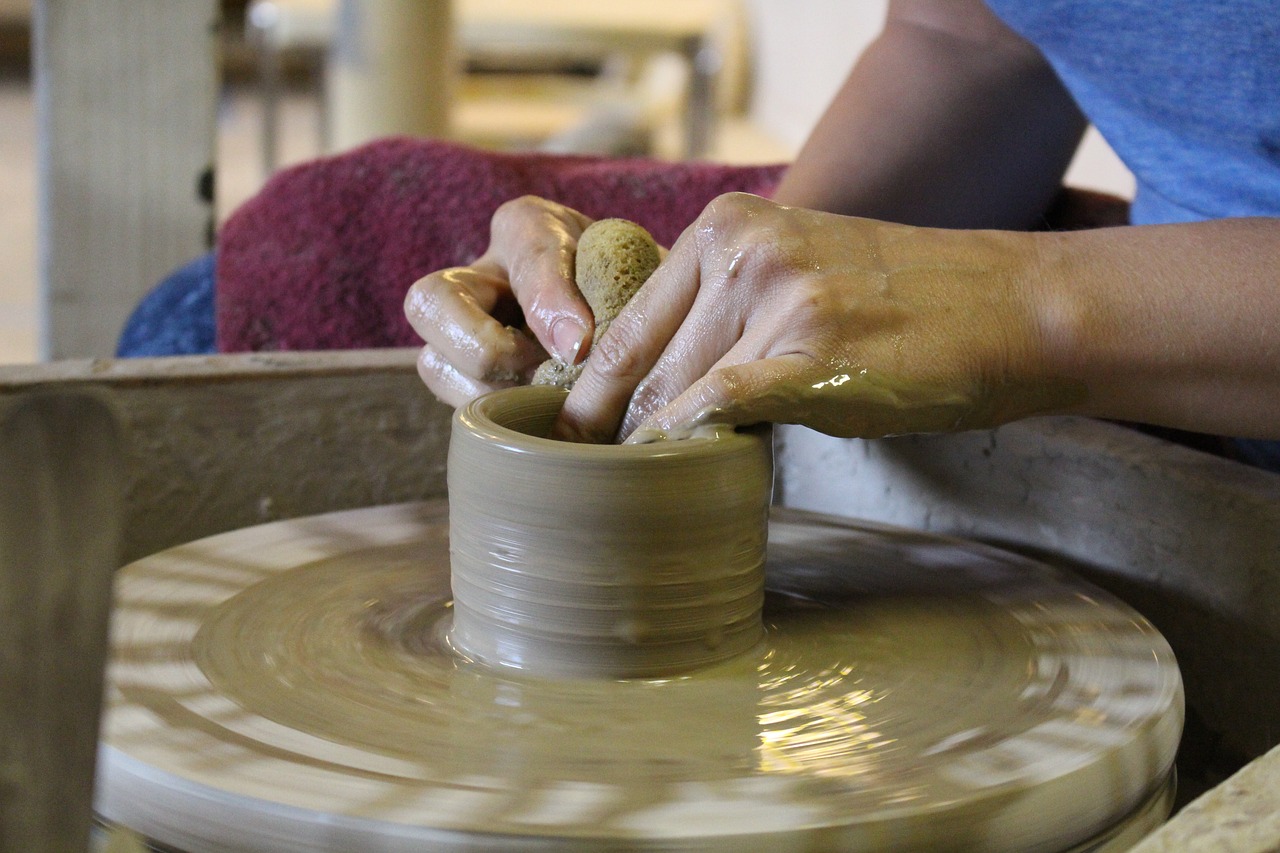
Material Matters: Types of Pottery
When it comes to pottery, the material used plays a crucial role in how your food tastes and how it’s presented. Different types of pottery, including earthenware, stoneware, and porcelain, each come with their own unique properties that can significantly influence your culinary experience. Understanding these materials can help you choose the right pottery for your cooking and serving needs, ultimately enhancing the flavors of your dishes.
Earthenware, for instance, is one of the oldest forms of pottery. Its porous nature allows it to absorb moisture, which can be a game-changer when cooking. This characteristic means that dishes cooked in earthenware can retain more flavor, as the moisture helps to keep the food tender and succulent. The slow cooking process in earthenware not only enhances the taste but also allows for a more even distribution of heat, which is essential for creating rich, complex flavors.
On the other hand, stoneware is known for its durability and excellent heat retention. This type of pottery is typically thicker and sturdier than earthenware, making it perfect for high-temperature cooking methods such as baking and roasting. Stoneware can intensify flavors through even cooking, ensuring that each bite of your food is packed with taste. Plus, it’s less likely to chip or crack, meaning you can use it for years without worrying about wear and tear.
Lastly, we have porcelain, which is often associated with fine dining. While it may not have the same heat retention properties as stoneware, porcelain is celebrated for its ability to showcase food beautifully. Its smooth, glossy surface reflects light, making your dishes look more appealing. This visual aspect can enhance your overall dining experience, as we often eat with our eyes first. The aesthetic appeal of porcelain can elevate even the simplest meals, making them feel special.
To summarize, here’s a quick comparison of the three types of pottery:
| Type of Pottery | Characteristics | Best Use |
|---|---|---|
| Earthenware | Porous, moisture-retentive | Slow cooking, rustic serving |
| Stoneware | Durable, excellent heat retention | Baking, roasting, everyday use |
| Porcelain | Smooth, glossy, visually appealing | Fine dining, elegant presentations |
In conclusion, the type of pottery you choose can have a profound impact on both the flavor and presentation of your food. Whether you opt for the rustic charm of earthenware, the robust functionality of stoneware, or the elegant allure of porcelain, each material offers something unique that can elevate your culinary experiences to new heights.
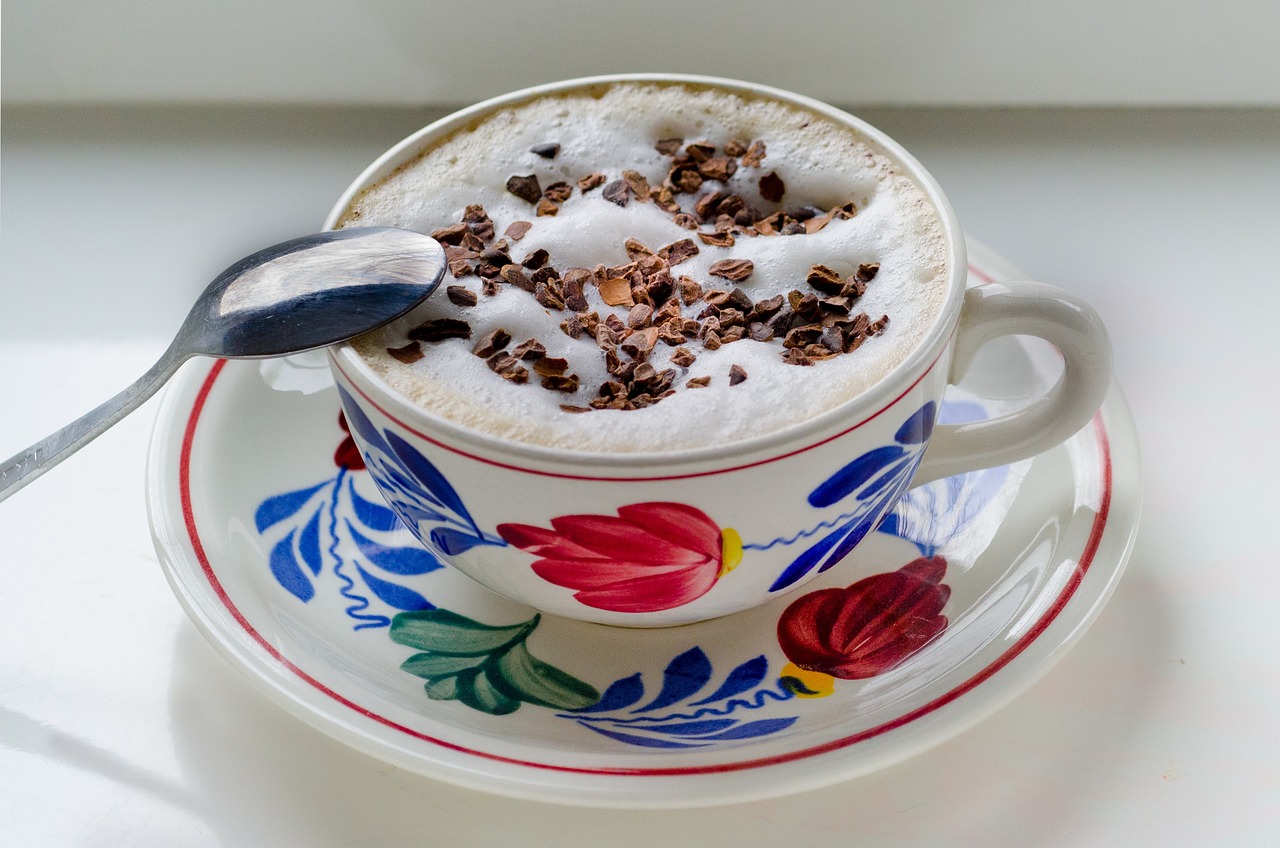
Earthenware and Its Flavor Profile
When we think of earthenware, we often picture rustic dishes, handcrafted pottery, and a warm, inviting atmosphere. But did you know that this unassuming material can significantly enhance the flavors of your food? Its porous nature allows it to retain moisture, creating an environment that helps to infuse flavors into your dishes. Imagine cooking a savory stew in a pot that breathes and absorbs the spices, allowing them to meld beautifully with the ingredients. This is the magic of earthenware.
One of the most remarkable aspects of earthenware is its ability to interact with the food it holds. As it heats up, the pot gradually releases moisture back into the dish, preventing it from drying out. This is particularly beneficial for slow-cooked meals, where flavors develop over time. The gentle heat retention of earthenware means that your food stays warm longer, allowing you to savor each bite without rushing. In many ways, cooking in earthenware is like wrapping your dish in a cozy blanket, ensuring it remains delicious and inviting.
Moreover, the flavor profile of dishes cooked in earthenware can be quite distinctive. The material itself can impart a subtle earthiness to the food, enhancing the natural flavors of the ingredients. Think of it as a secret ingredient that elevates your meals without overpowering them. For instance, a simple vegetable medley can taste remarkably richer when prepared in an earthenware pot compared to a standard metal pan.
To illustrate this, let's take a look at some common dishes and how earthenware can enhance their flavors:
| Dish | Flavor Enhancement |
|---|---|
| Chili | Moisture retention deepens spices and flavors. |
| Roasted Vegetables | Earthiness from the pot complements the veggies. |
| Slow-Cooked Stews | Stews become richer and more complex over time. |
In addition to cooking, serving food in earthenware can also enhance the overall experience. The rustic look of earthenware adds a touch of authenticity and warmth to your dining table. It's like bringing a piece of history to your meal, connecting you to generations of cooks who have used similar techniques. Plus, the tactile nature of the pottery invites your guests to engage with their food on a deeper level. After all, we eat with our eyes first, and earthenware certainly makes for a beautiful presentation.
So, the next time you’re preparing a meal, consider reaching for that earthenware pot tucked away in your kitchen. Not only will it elevate the flavors of your dishes, but it will also add a layer of charm to your dining experience. It's a wonderful way to connect with the past while enjoying the present, and who wouldn’t want that in their culinary adventures?
- What is earthenware made from? Earthenware is typically made from clay that is fired at low temperatures, making it porous and ideal for moisture retention.
- Can I use earthenware in the oven? Yes, most earthenware is safe for oven use, but always check the manufacturer's instructions to be sure.
- How do I care for my earthenware? To maintain your earthenware, avoid sudden temperature changes and hand wash it instead of using a dishwasher.

Cooking Techniques with Earthenware
Cooking with earthenware is like taking a step back in time, embracing methods that have been cherished for centuries. The beauty of earthenware lies not just in its rustic charm but also in its ability to transform simple ingredients into culinary masterpieces. One of the standout features of earthenware is its ability to retain moisture, which is crucial for creating rich, flavorful dishes. When you cook in earthenware, the porous nature of the material allows steam to circulate, ensuring that your food remains tender and juicy.
Imagine preparing a hearty stew or a delicious casserole in an earthenware pot. The slow cooking process allows the flavors to meld beautifully, creating a depth of taste that is hard to replicate with other materials. The key to maximizing flavor in earthenware is to embrace slow cooking techniques. By cooking your dishes at lower temperatures for extended periods, you allow the ingredients to break down and release their natural flavors. This method is particularly effective for tougher cuts of meat, which become incredibly tender over time.
Another fantastic technique is the use of layering ingredients. Start by placing a base of vegetables, followed by your protein, and top it off with a flavorful broth or sauce. As everything cooks together, the flavors infuse one another, resulting in a dish that is not only delicious but visually appealing as well. The earthy tones of the earthenware can enhance the presentation, making your meal feel even more special.
For those who enjoy experimenting, consider using earthenware for baking. Yes, you heard that right! Baking bread or desserts in earthenware can yield a delightful crust and a moist interior. The even heat distribution of earthenware means that your baked goods will rise beautifully and develop a lovely golden color. Just remember to preheat the earthenware pot before adding your batter, as this will help create that perfect crust.
When serving, earthenware adds a rustic touch that elevates the dining experience. Imagine placing a bubbling lasagna or a savory chili directly from the oven onto the table in its earthenware dish. Not only does it keep the food warm, but it also invites your guests to dig in and enjoy the meal together. The tactile experience of handling earthenware, with its unique textures and colors, adds to the overall sensory enjoyment of the meal.
To summarize, cooking with earthenware is an art that involves patience, creativity, and a love for flavor. By utilizing slow cooking techniques, layering ingredients, and even baking, you can unlock the true potential of your dishes. So, the next time you're in the kitchen, consider reaching for that earthenware pot—your taste buds will thank you!
- Can I use earthenware on the stovetop? No, earthenware is not suitable for direct stovetop use. It's best used in the oven or for slow cooking methods.
- How do I care for my earthenware? To maintain your earthenware, avoid sudden temperature changes, and hand wash it with mild soap and water.
- Can I cook acidic foods in earthenware? Yes, but be cautious with highly acidic ingredients, as they can sometimes react with the clay. It's best to use well-glazed earthenware for these types of dishes.
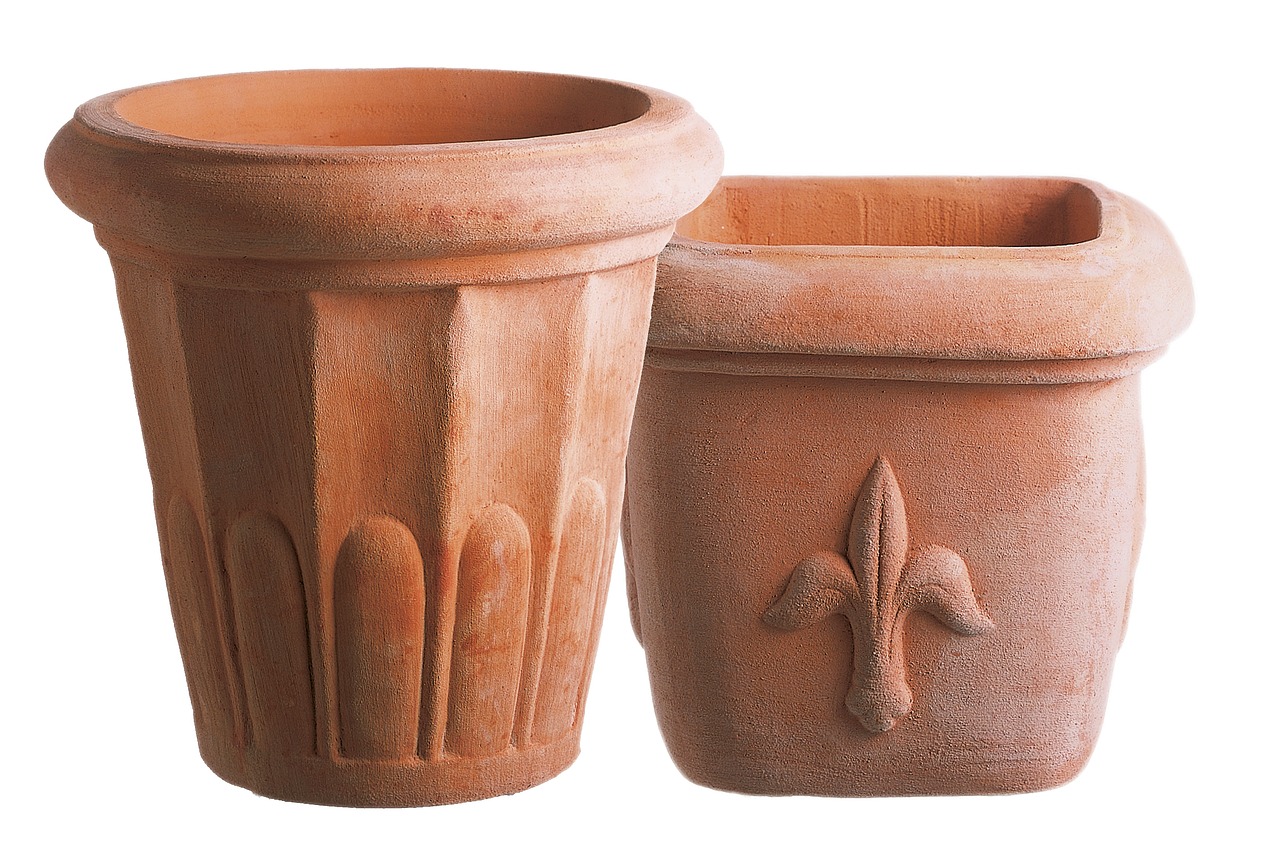
Serving with Earthenware
When it comes to serving food, earthenware is a game changer. Imagine bringing a dish to the table, not just in any old bowl, but in a beautifully crafted earthenware pot that’s been lovingly made by hand. The rustic charm of earthenware can instantly elevate your dining experience, making even the simplest meals feel special. This unique serving method not only enhances the visual appeal of your food but also adds a layer of warmth and authenticity that’s hard to replicate with modern materials.
One of the most fascinating aspects of serving food in earthenware is how it interacts with the dishes themselves. The porous nature of earthenware allows for a subtle infusion of flavors. For example, when you serve a rich stew in an earthenware bowl, it can absorb some of the essence of the dish, resulting in a more cohesive flavor profile. This means that every bite you take is not just a taste of the ingredients, but a harmonious blend of all the flavors that have mingled within that pot.
Moreover, the aesthetic appeal of earthenware cannot be overstated. The earthy tones and textures of these dishes can create a stunning backdrop for your culinary creations. Whether you're serving a vibrant salad or a hearty casserole, the contrast of colors against the rustic surface of earthenware amplifies the visual delight. Think of it as a canvas for your food artistry—each dish becomes a masterpiece waiting to be admired before it’s devoured.
Another advantage of using earthenware for serving is its ability to maintain temperature. Hot foods stay hot longer, and cold foods remain chilled, which is essential for preserving the integrity of your meal. This means that your guests can enjoy every bite at the ideal temperature, enhancing their overall dining experience. Plus, there’s something incredibly comforting about the tactile sensation of warm earthenware in your hands, making every meal feel like a cozy gathering.
Incorporating earthenware into your serving style is also a fantastic way to embrace cultural traditions. Many cuisines around the world utilize earthenware for serving, each with its unique history and significance. By adopting this practice, you're not just enhancing your meals; you're also connecting with culinary traditions that have stood the test of time. It’s like bringing a piece of history to your dining table, allowing you and your guests to savor not just food, but the stories and cultures behind it.
So, the next time you’re planning a meal, consider reaching for that beautiful earthenware dish. It’s not just about serving food; it’s about creating an experience that tantalizes the senses and warms the heart. After all, dining is as much about the atmosphere and presentation as it is about the flavors. With earthenware, you can transform an ordinary meal into a memorable occasion.
- Is earthenware safe for cooking? Yes, earthenware is safe for cooking, but it's important to check if it's labeled as oven-safe.
- How do I care for my earthenware? Hand wash your earthenware with mild soap and avoid sudden temperature changes to prevent cracking.
- Can I use earthenware in the microwave? Many earthenware pieces are microwave-safe, but always check the manufacturer's guidelines.
- What types of dishes are best served in earthenware? Soups, stews, casseroles, and baked dishes are particularly suited for earthenware due to its heat retention properties.

Stoneware: Durability Meets Flavor
When it comes to the world of pottery, stoneware stands out as a remarkable fusion of durability and culinary excellence. This type of pottery is crafted from a dense clay that is fired at high temperatures, resulting in a strong, non-porous material that is not only aesthetically pleasing but also functional in the kitchen. One of the most significant advantages of stoneware is its ability to retain heat, which is essential for achieving that perfect, even cooking. Imagine pulling a beautifully baked lasagna from the oven, the edges perfectly crisped while the center remains warm and inviting. That's the magic of stoneware!
But let's delve deeper into how stoneware can enhance the flavors of your food. The unique properties of stoneware allow it to distribute heat evenly, minimizing the risk of hot spots that can lead to uneven cooking. This means your dishes come out uniformly cooked, allowing the flavors to meld together beautifully. Whether you’re roasting vegetables, baking bread, or simmering a hearty stew, stoneware ensures that every bite is as flavorful as the last. Plus, the natural materials used in stoneware can even contribute to a subtle flavor enhancement, giving your food a rustic, earthy quality that is hard to replicate with other materials.
Another fantastic aspect of stoneware is its versatility. You can use it in the oven, microwave, and even the dishwasher, making it a practical choice for busy home cooks. This means you can easily transition from cooking to serving without worrying about transferring food between different dishes. Imagine the convenience of presenting your dish directly from the oven to the table in a stunning stoneware dish, not only saving time but also creating a beautiful centerpiece for your dining experience.
Furthermore, stoneware often comes in a variety of colors and glazes, allowing you to choose pieces that complement your kitchen decor and personal style. From deep blues to earthy browns, the aesthetic appeal of stoneware can elevate your dining experience, making meals feel more special. The visual presentation of food plays a crucial role in our enjoyment of it, and stoneware adds that touch of elegance and charm.
As with any cookware, taking care of your stoneware is essential to maintain its beauty and functionality. It’s advisable to avoid drastic temperature changes, as this can lead to cracking. Instead, let your stoneware come to room temperature before placing it in a hot oven. With proper care, your stoneware can last for generations, becoming a cherished part of your culinary journey.
In conclusion, stoneware is not just about durability; it's about enhancing the flavor and presentation of your food. Its ability to retain heat, even cooking properties, and aesthetic appeal make it a must-have in any kitchen. So, the next time you're looking to elevate your cooking game, consider reaching for a piece of stoneware. You might just find that it transforms not only the way your food tastes but also how you experience every meal.
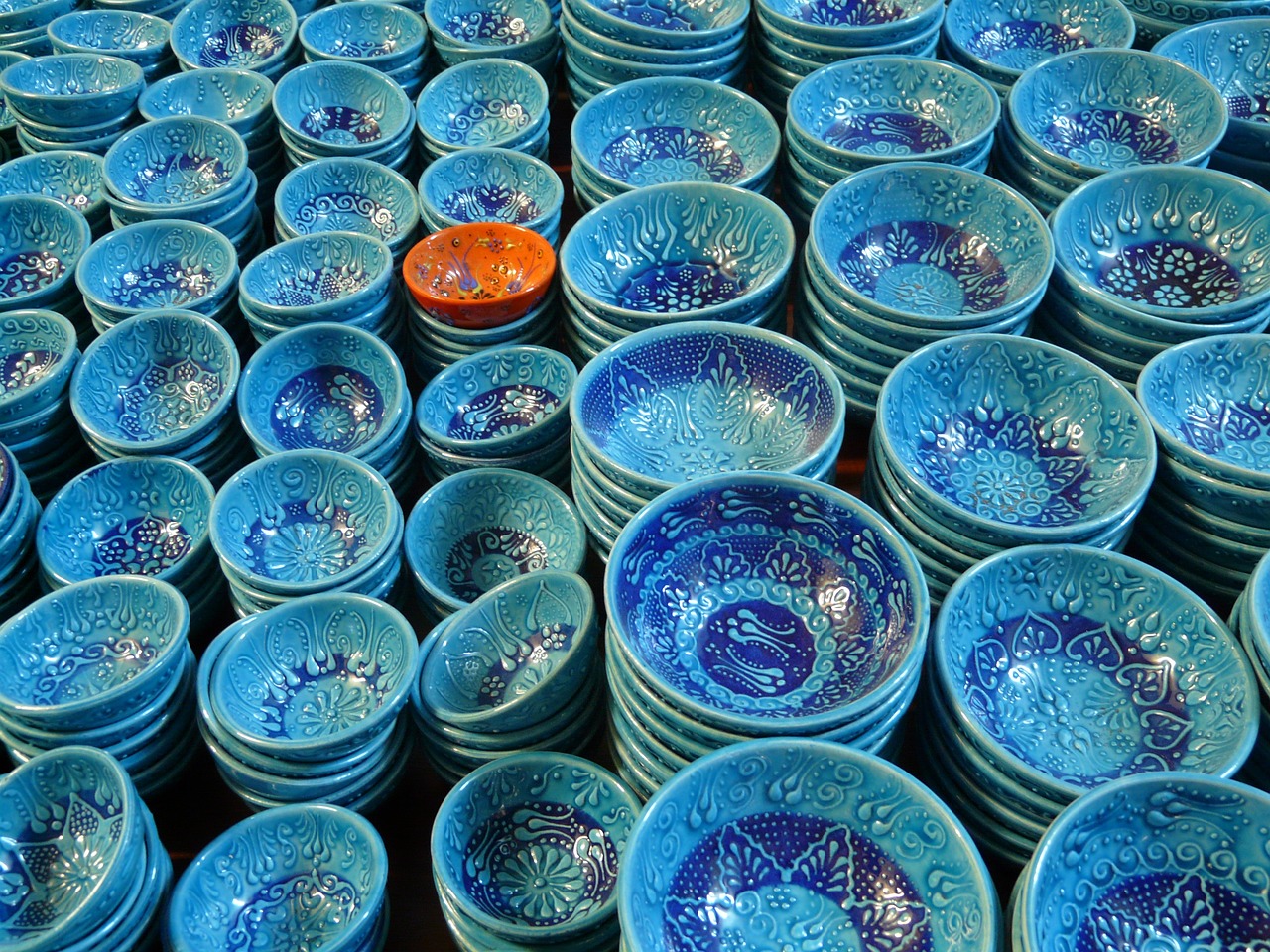
The Aesthetic Appeal of Pottery
When we think about food, our senses engage in a delightful dance. The aroma wafts through the air, the flavors tantalize our taste buds, and let's not forget the visual appeal! Pottery plays a crucial role in this sensory experience, transforming an ordinary meal into a feast for the eyes. The beauty of pottery lies not just in its functionality but in its ability to elevate the entire dining experience. Imagine serving a vibrant salad in a hand-painted bowl; the colors pop, making the dish even more appetizing. It's as if the pottery whispers to your taste buds, “Get ready for something special!”
But what makes pottery so aesthetically pleasing? It’s all about color, texture, and design. Different types of pottery come in a variety of hues and finishes, each contributing to the overall ambiance of your dining table. For instance, a rustic earthenware plate can evoke a sense of warmth and comfort, while a sleek porcelain dish might add a touch of elegance and sophistication. The choice of pottery can set the mood for the meal, influencing how we perceive and enjoy the food. Consider this: a beautifully crafted bowl can transform a simple soup into a culinary masterpiece, enhancing the dining experience.
Moreover, the texture of pottery adds another layer of depth to the presentation. A rough, handmade piece can evoke a sense of authenticity and tradition, while a smooth, glossy surface might suggest modernity and refinement. This tactile element invites diners to engage with their food in a more intimate way. When you touch a piece of pottery, you can feel the craftsmanship, the love, and the history behind it. It's a connection that goes beyond mere aesthetics; it’s about the story each piece tells.
Additionally, the shape and size of pottery can greatly influence how we serve and enjoy our meals. A wide, shallow bowl is perfect for salads, allowing the colors and textures to shine, while a deep, narrow dish is ideal for pasta, creating a cozy, inviting presentation. Each piece of pottery has its own personality, and when used thoughtfully, it can enhance the flavors and presentation of the food. Think about how a well-chosen piece of pottery can make your dining table look like a work of art, inviting everyone to gather around and share a meal.
To illustrate the impact of pottery on dining aesthetics, consider the following table:
| Type of Pottery | Visual Appeal | Ideal Use |
|---|---|---|
| Earthenware | Rustic, Warm | Casual Dining, Comfort Foods |
| Stoneware | Durable, Earthy | Everyday Meals, Hearty Dishes |
| Porcelain | Sleek, Elegant | Formal Dining, Delicate Foods |
Incorporating pottery into your meals isn’t just about aesthetics; it’s about creating an experience. When you serve food in beautiful pottery, you’re not just feeding the body; you’re nourishing the soul. Think of it as setting the stage for a performance where the food is the star, and the pottery is the backdrop that enhances its brilliance. So, the next time you prepare a meal, consider how the pottery you choose can transform the ordinary into the extraordinary.
In conclusion, the aesthetic appeal of pottery is a powerful tool in the culinary world. It enhances not only the presentation but also the overall experience of dining. So, whether you’re hosting a dinner party or enjoying a quiet meal at home, remember that the beauty of your pottery can make your food taste even better!
- Does pottery really affect the taste of food?
Yes, different types of pottery can influence heat retention and moisture, which can enhance flavors. - How do I choose the right pottery for my meals?
Consider the type of food you’re serving and the ambiance you want to create. Each type of pottery has its unique characteristics. - Can I use pottery in the oven?
Most stoneware and some earthenware are oven-safe, but always check the manufacturer's guidelines before use.
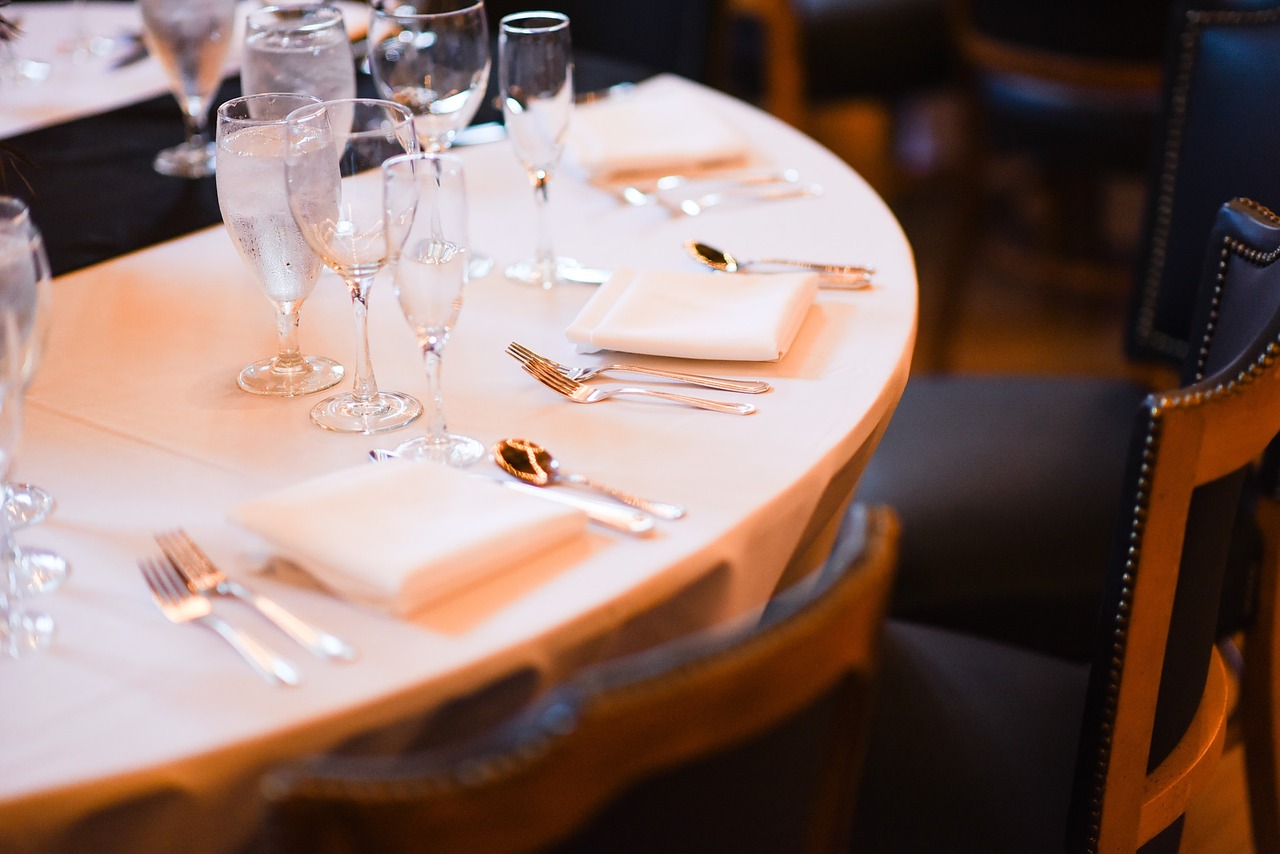
Color and Design Influence
Have you ever noticed how the color of your plate can change your mood or even your appetite? It's fascinating how something as simple as a vibrant hue or an intricate design can elevate a dining experience. Pottery, with its rich palette and diverse patterns, plays a significant role in this sensory journey. When you serve food in a beautifully crafted piece, it’s not just about the meal; it’s about the entire atmosphere you create. The right pottery can transform a simple dinner into a feast for the eyes and the palate.
Colors in pottery often evoke emotions and sensations. For instance, warm colors like reds and oranges can stimulate appetite and create a feeling of warmth and comfort. On the other hand, cool colors such as blues and greens can evoke calmness and tranquility, making them perfect for a relaxing meal. Imagine enjoying a hearty stew served in a rustic, earthy red bowl—doesn’t it just feel more inviting? In contrast, a delicate fish dish presented on a serene blue plate might make you feel more at ease, enhancing your overall dining experience.
Moreover, the design of pottery can also influence how we perceive food. Intricate patterns and textures can draw attention to the dish, making it more visually appealing. A well-designed plate can act as a canvas, showcasing the vibrant colors of your culinary creations. For example, a salad served in a hand-painted bowl with floral designs can make the greens pop, inviting diners to indulge. The artistry of pottery not only serves a functional purpose but also enriches the presentation, making each meal a celebration.
It’s interesting to think about how different cultures incorporate color and design into their pottery. Traditional Mediterranean pottery, known for its bold colors and intricate designs, reflects the vibrant lifestyle of the region. Meanwhile, Japanese ceramics often emphasize simplicity and subtlety, focusing on natural tones and minimalistic designs. Each style tells a story and adds a unique flair to the dining experience. By choosing pottery that resonates with your personal style or cultural heritage, you can create a dining atmosphere that feels authentic and meaningful.
Incorporating pottery into your meals is not just about function; it’s about creating a holistic experience. Whether you’re hosting a dinner party or enjoying a quiet meal at home, the right pottery can enhance the flavors of your food while also creating a visually stunning presentation. So, next time you set the table, consider the colors and designs of your dishes. You might be surprised at how they can transform your meal from ordinary to extraordinary!
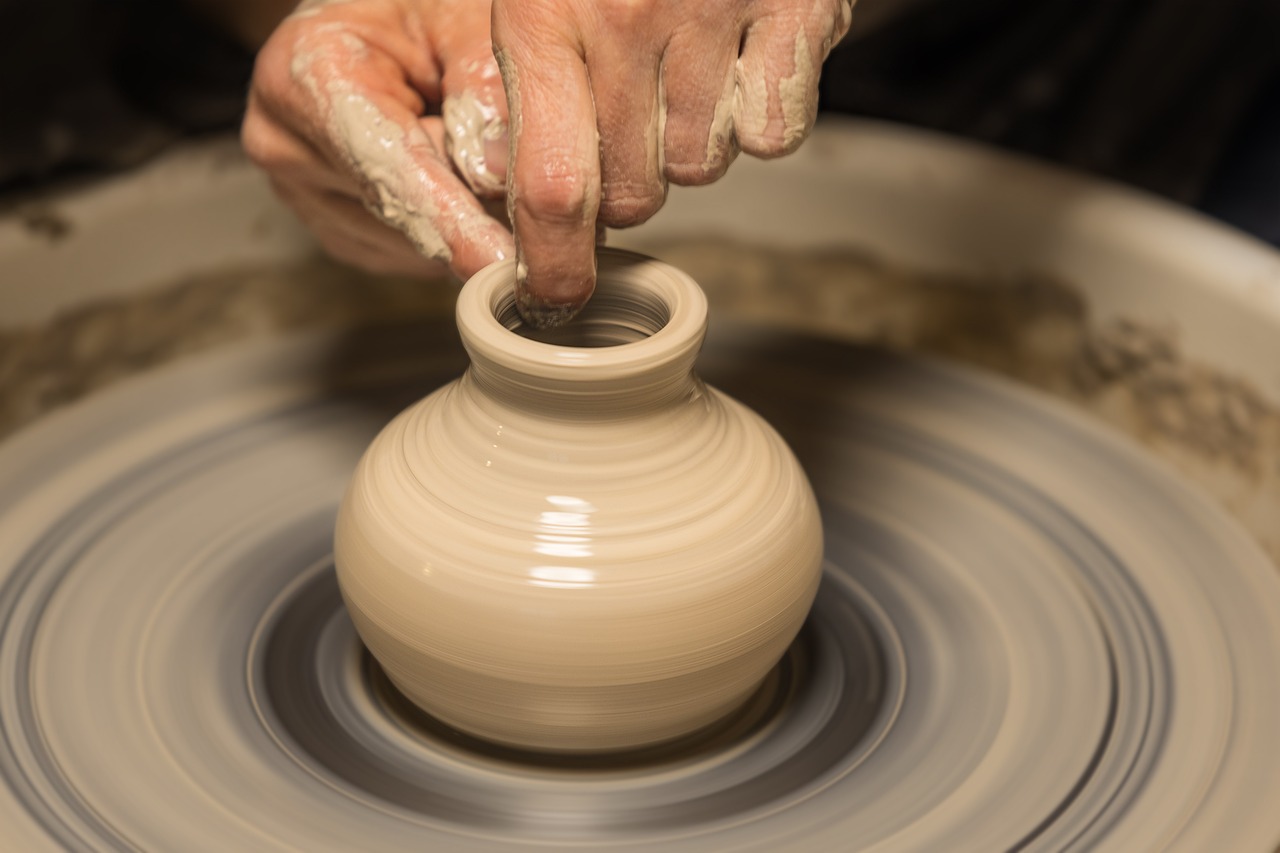
Creating a Pottery Collection
Building a pottery collection is not just about acquiring beautiful pieces; it's an adventure that can transform your culinary experiences and add a personal touch to your dining table. Think of it as curating a gallery of flavors, where each piece of pottery tells a story and enhances the overall aesthetic of your meals. When you start collecting, consider what resonates with your style and how each item can complement your cooking.
First, it's essential to understand the different types of pottery available. You might want to focus on a specific type, such as earthenware or stoneware, depending on your cooking preferences. For instance, if you enjoy slow-cooked dishes, earthenware could be your best friend, while stoneware is perfect for those who value durability and heat retention. Each type of pottery has its unique charm and functionality, which can elevate your dining experience.
As you build your collection, think about the colors and designs that appeal to you. Pottery comes in a myriad of styles, from rustic and earthy tones to vibrant and intricate patterns. The visual appeal of your pottery can significantly influence the mood of your meals. For example, vibrant colors can stimulate appetite and create a lively atmosphere, while muted tones may evoke a sense of calm and sophistication. Choosing pieces that match your personal taste can make your dining experiences more enjoyable.
Don't forget to consider the size and shape of the pottery you want to collect. Different shapes can serve various purposes, from large serving dishes to small individual bowls. Each piece can play a role in how you present your food and can even affect how flavors are perceived. For instance, a wide, shallow bowl may allow for better aroma dispersion, enhancing the overall flavor experience.
Another tip for creating a well-rounded collection is to think about functionality and versatility. Some pottery can be used for cooking, serving, and even storing food. This multifunctionality can save space in your kitchen and provide more opportunities to showcase your collection. For example, a beautiful stoneware casserole can go from oven to table, making it both practical and aesthetically pleasing.
Lastly, consider incorporating pieces from local artisans or traveling to pottery markets. Not only will this support local craftspeople, but it will also give your collection a unique flair. Each piece can serve as a conversation starter, bringing a personal touch to your dining experiences. Remember, a pottery collection is not just about the items themselves; it's about the memories and stories they hold.
- How do I care for my pottery collection?
Proper care depends on the type of pottery. Generally, hand washing is recommended to maintain the integrity of the glaze and prevent chipping. - Can I use my pottery in the oven?
Most stoneware is oven-safe, but always check the manufacturer's guidelines for specific pieces. - Where can I find unique pottery pieces?
Look for local art fairs, pottery markets, and online artisan shops for one-of-a-kind items.
Frequently Asked Questions
- How does pottery enhance the flavor of food?
Pottery, especially earthenware, has a unique porous structure that allows it to retain moisture. This characteristic helps to infuse flavors into the food, making each bite more delicious. Additionally, the way pottery retains heat can create an even cooking environment, ensuring your meals are perfectly cooked and flavorful.
- What types of pottery are best for cooking?
There are several types of pottery suitable for cooking, including earthenware, stoneware, and porcelain. Earthenware is great for slow cooking due to its moisture retention, while stoneware is known for its durability and excellent heat retention, making it perfect for baking and roasting. Each type brings its own unique flavor-enhancing properties to your dishes.
- Can I use pottery in the oven?
Yes, many types of pottery, particularly stoneware, are designed to withstand high temperatures and can be safely used in the oven. Just be sure to check the manufacturer's guidelines to ensure that your specific pottery piece is oven-safe to avoid any accidents!
- Is there a difference in taste when serving food in pottery?
Absolutely! Serving food in pottery not only enhances the visual appeal but can also impact the taste. The materials used in pottery can interact with the food, potentially enhancing flavors and aromas, making the dining experience even more enjoyable.
- How should I care for my pottery?
To keep your pottery in great condition, it’s essential to follow proper care instructions. Generally, you should avoid sudden temperature changes, hand wash your pieces instead of using a dishwasher, and store them in a safe place to prevent chipping. Regularly checking for any cracks or damage can also help prolong their lifespan.
- Can I use pottery for both cooking and serving?
Definitely! Many pottery pieces are versatile enough to be used for both cooking and serving. Earthenware, for example, is excellent for slow-cooked meals and can also be used to serve those dishes, adding a rustic charm to your dining table.
- What are some tips for building a pottery collection?
When building a pottery collection, consider your cooking style and the types of dishes you love to prepare. Look for pieces that complement each other in color and design. Start with a few essential items, like a baking dish or serving bowl, and gradually add unique pieces that catch your eye and inspire your culinary adventures.



















